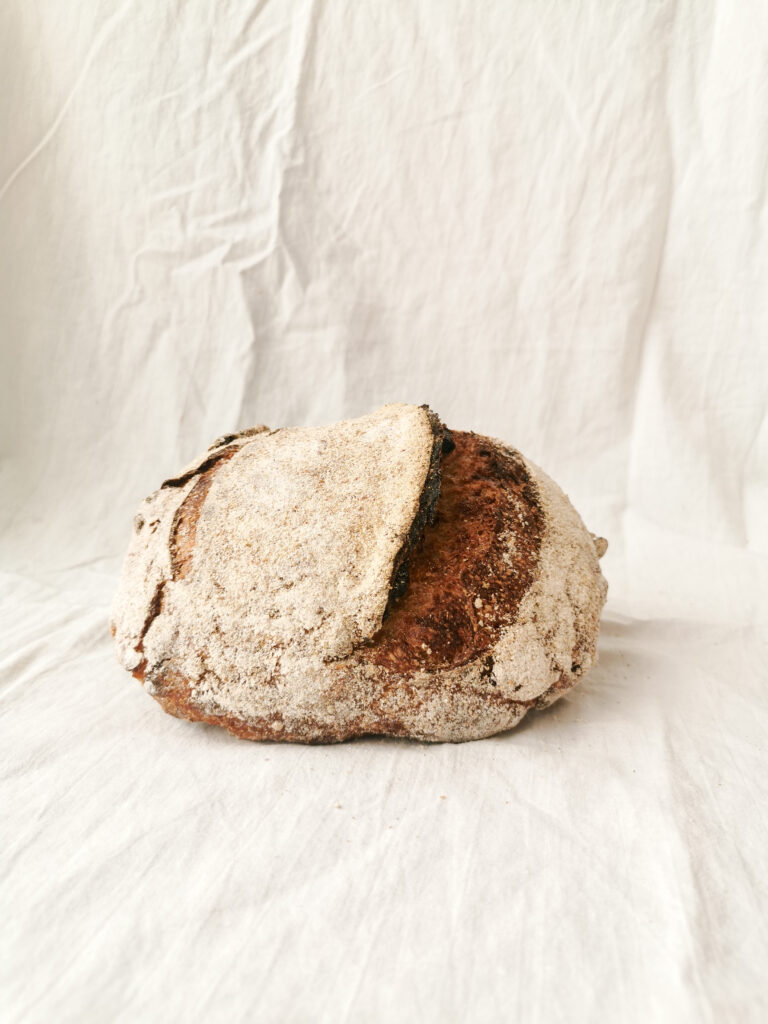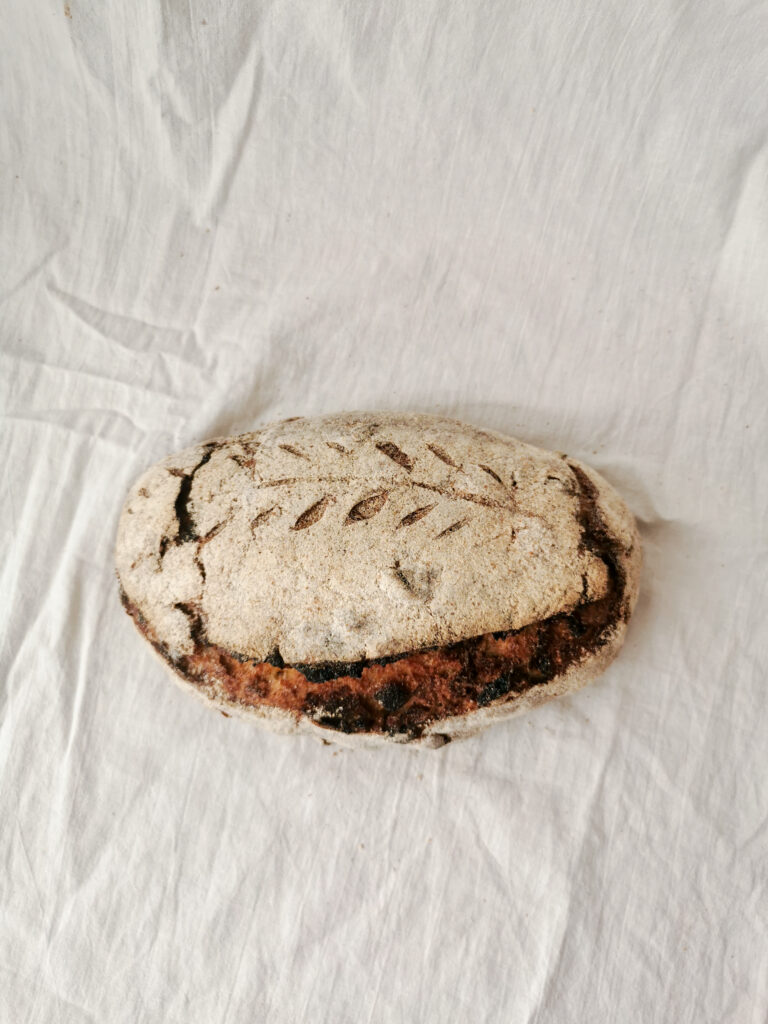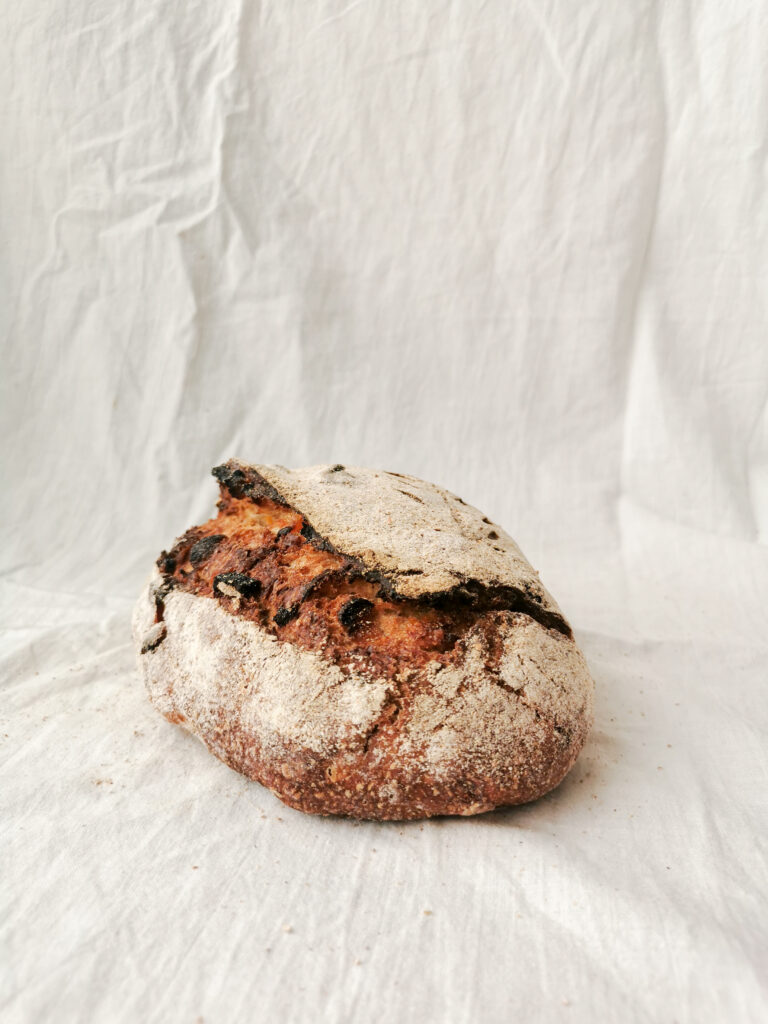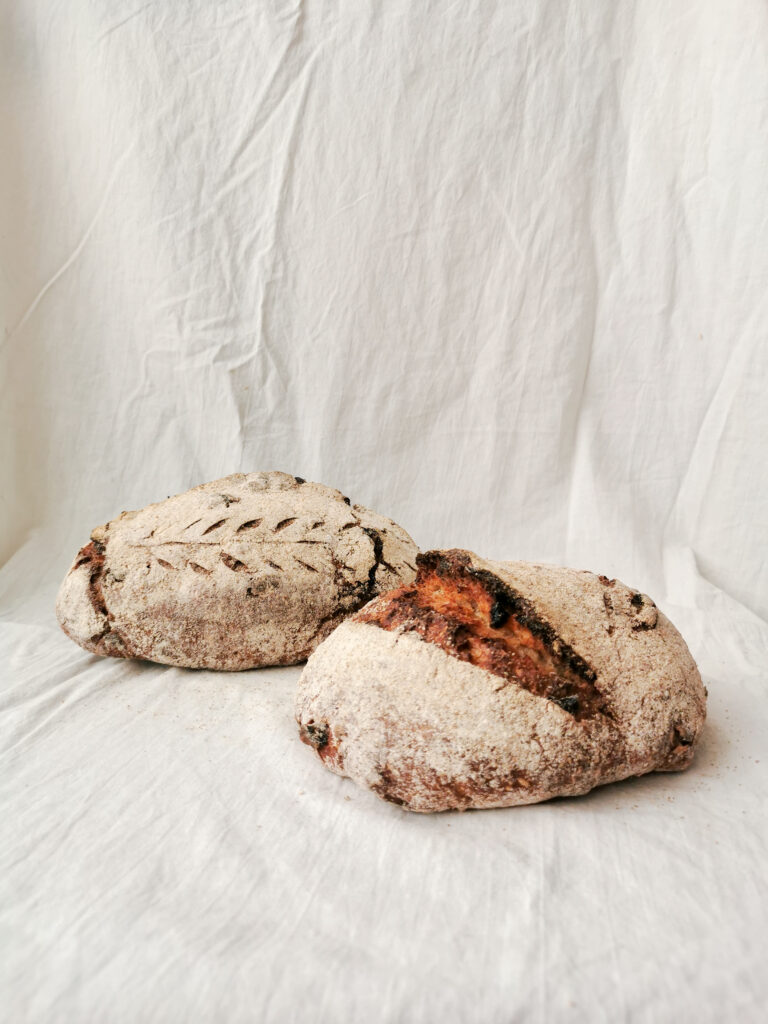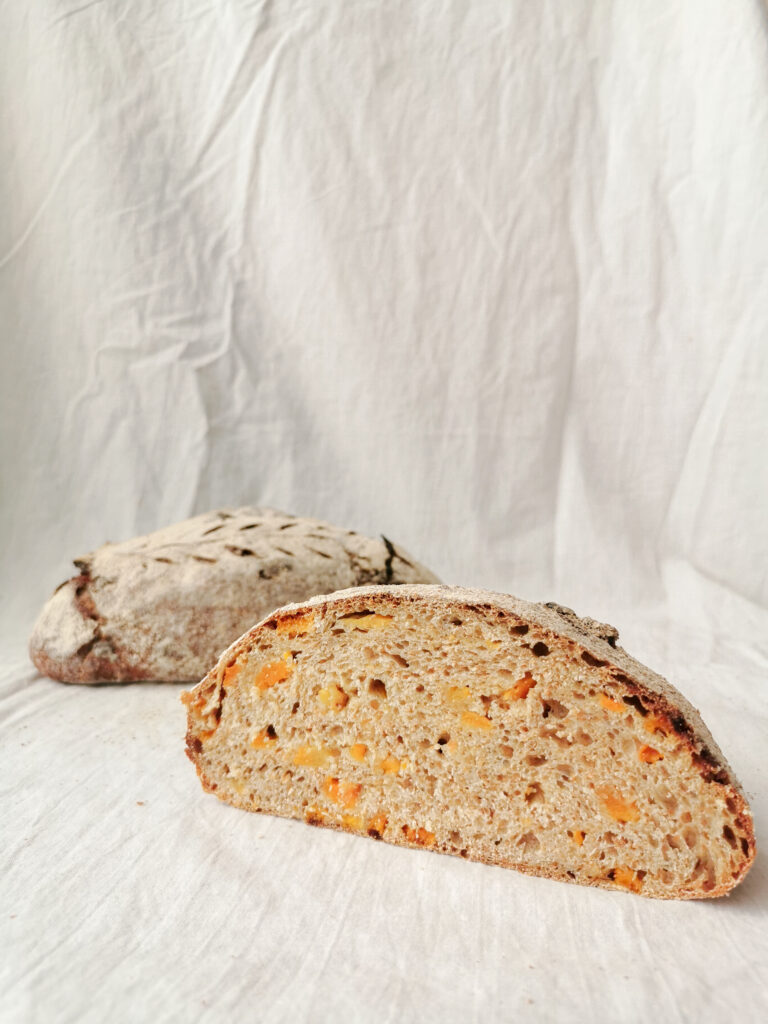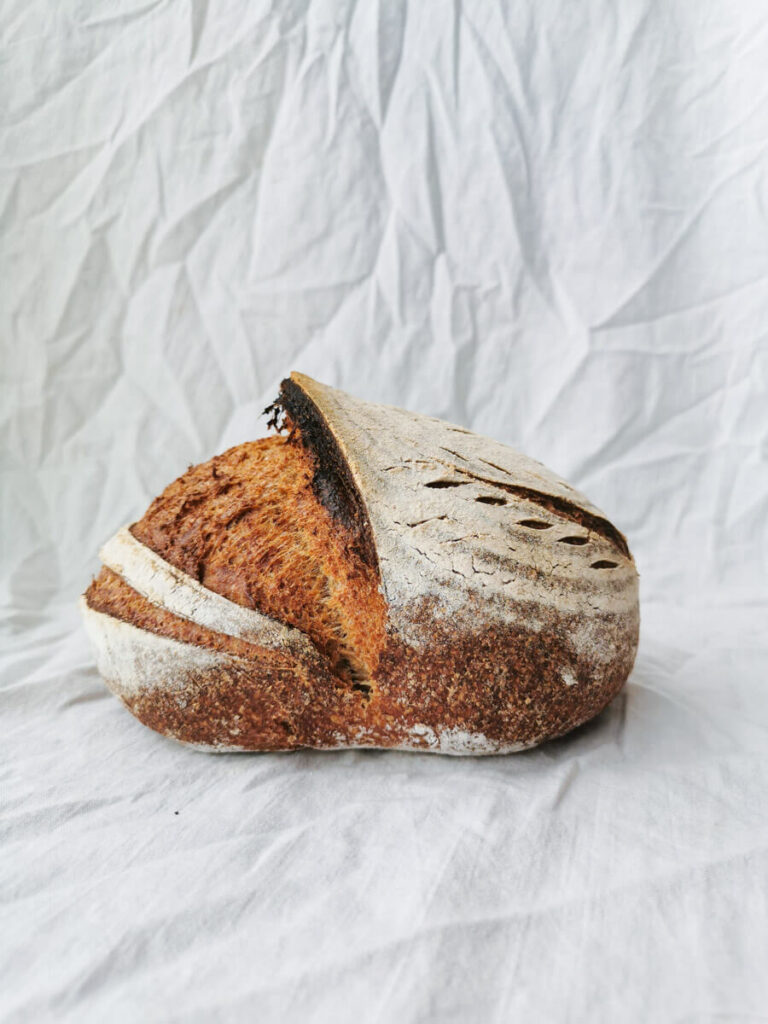A deliciously fruity wheat/spelt bread with the sour tones of sourdough bread packed with healthy fiber and nutrients to keep you fueled all day long. The apricots provide a fruity taste with needed quick carbohydrates, where the partly whole wheat sourdough bread satisfies your savory cravings with slow carbohydrates and fiber to energize throughout the day. Definitely worth a try!
This is a sourdough bread, which means it proofs using natural yeasts instead of instant yeast. Since I started baking sourdough bread, I can’t seem to stop. Trust me it is very addictive. At first it can seem a little intimidating, and overwhelming. It seems very complicated, and yes in the beginning you may well end up with a flat pancake from the oven after trying so hard. But the advantage with sourdough bread is that they always taste good, no matter what they look like. So never give up! After practicing a few times you will get the feel and it will become a big fun adventure where you can let your creativity run wild. That’s what I did with this bread; sweet yet healthy enough for a filling lunch.
KEY INGREDIENTS
- Sourdough starter; you will need your own sourdough starter. I always feed my starter with 1:1 rye flour and all purpose wheat flour. I keep my starter in the refrigerator and feed about 10 grams with 20 grams of flour/flour and 20 grams of water. I do this 1 to 2 days before I start baking. Do you not have a starter yet? No worries, there are plenty of videos on YouTube how to make one yourself. Or ask someone on Social Media to share a bit with you, that’s just as easy and much faster. The advantage is also that these starters are already older and more active because they have had longer to build up the right bacterial culture.
- Flour; For this bread, I chose a combination of wheat flour, whole wheat flour and spelt flour. If you choose a 100% whole wheat bread, add more water, and for a bread based only on wheat flour add less. When baking a 100% spelt bread, be careful not to knead the dough too long!
- Water; The secret to good bread
- Salt; I use baker’s salt but you can hardly go wrong with salt.
- Additions; I used ‘ready to eat’ apricots, these are already nice and soft. If you can’t find them, you can also use dried apricots. Make sure you soak them in lukewarm water for 15/30 minutes before adding them. I also added ground anise seed for an extra flavor bomb.
HOW TO PAIR THE BREAD
It may have a more unique flavor than regular bread, but you can vary it endlessly, both sweet and savory. Personally, I like to top it with an older type of cheese. But buffalo mozerella or buratta is also delicious with it. In addition, a thick layer of crunchy peanut butter is a very good combination. Or soft goat cheese with balsamic cream. Another tip is to toast the bread first when it gets a bit older and drier. Then it is very tasty with a layer of butter alone. Enjoy!

Apricot sourdough bread with aniseed
Ingrediënten
Equipment
Method
- Mix all the ingredients for the levain in a large bowl with a spatula or your hands. Note; it does not need to be kneaded, just mixed. Once all the moisture is absorbed and there is no dry flour left, it's enough. Cover the bowl and let the mixture stand at room temperature until it reaches its highest point, and has at least doubled in size. This is usually between 9 and 11 hours with me. Make sure you use it before it starts to collapse again.
- Add the water to the levain and mix until it dissolves a little in the water. Then add the 3 types of flour. Mix this until all the flour is dissolved. Cover the bowl and let stand for about 30 minutes. This step is called autolyse.
- Now add the salt and aniseed and knead everything together on your workbench until it becomes a smooth dough. About 5 minutes. Then add the apricots cut into pieces by placing them on the dough and folding them into the dough. You can also add the extra 40 g water at this point if the dough can still absorb some moisture.
- Form a ball of the dough and place it back in the bowl. Cover the bowl and let it rise at room temperature. During this rise you are going to perform stretches and folds. 4x after 20 minutes. So after 20 minutes of rising, pull up the side of the dough that is furthest away from you and fold it until 2/3rds of the dough is facing you. Turn the bowl over so that the side that was just near you is farthest away from you and now pull this side up and fold it toward you. Repeat for the two sides as well. This is 1 straight and fold. Cover the bowl and repeat this step 3 more times, every 20 minutes. Then just let the dough rest, covered, until it has doubled in volume. This usually takes 3/4 hour for me. You can tell it's ready when you poke it with a fork and a dent remains in the dough.
- Place your dough on a lightly floured workbench and divide the dough into two equal parts. round up both parts and leave covered for 20 minutes. Then shape the dough into boules or batards (there are many videos on YouTube). Sprinkle your rice baskets with flour and place the dough in the baskets, seam side up, and cover.
- Allow the formed dough to rise at room temperature until it has approximately doubled. the dough is good when it feels light and fluffy when you press it with your finger, it should move a little like a pudding. when you prick a finger in it and a small dent appears and slowly springs back, it is good. if it springs back immediately, it can stand for a while. if a deep dent remains visible > quickly put it in the oven and hope for the best…. With me, the second proofing usually takes about 2 to 3 hours.
- Make sure you preheat your oven to 220/230 degrees at least 1 hour beforehand. Heat a roasting pan with it.
- Place the dough carefully on the baking tray and cut it several times with a sharp knife. Very carefully pour into the roasting pan 1.5 dl of boiling water and very quickly close the oven door. Reduce the temperature to 210 degrees and bake the bread for 20/25 minutes. Then remove the roasting pan, lower the temperature to 180 degrees and bake for another 20 minutes. After baking, place the loaves on a wire rack and allow them to cool completely before cutting open for the best result and most flavor.


